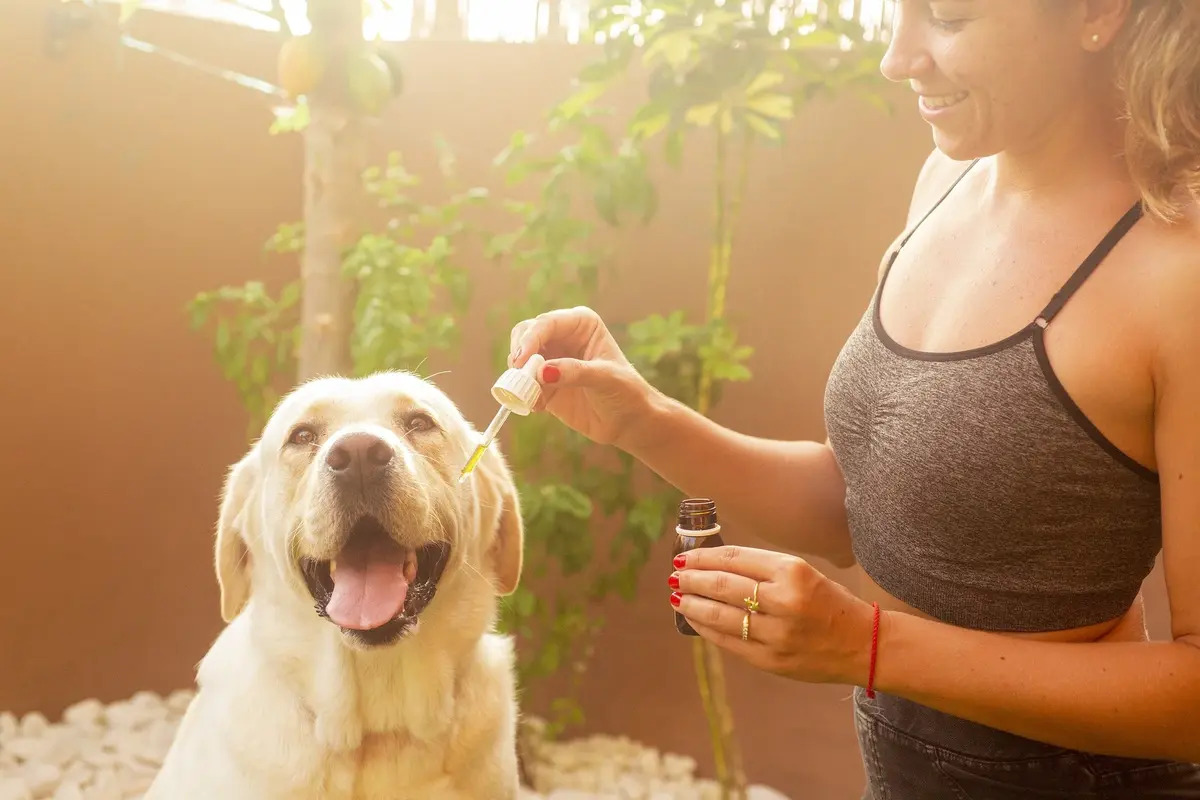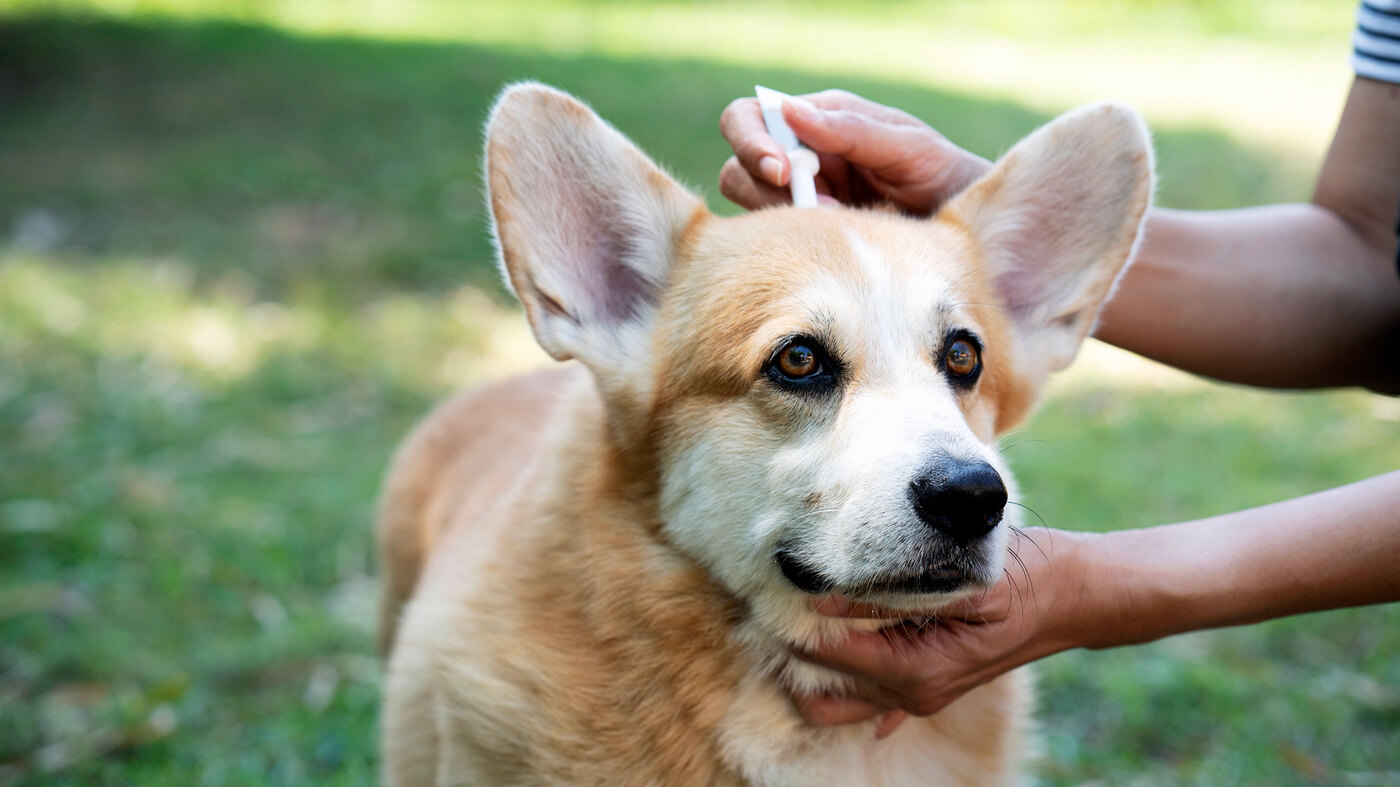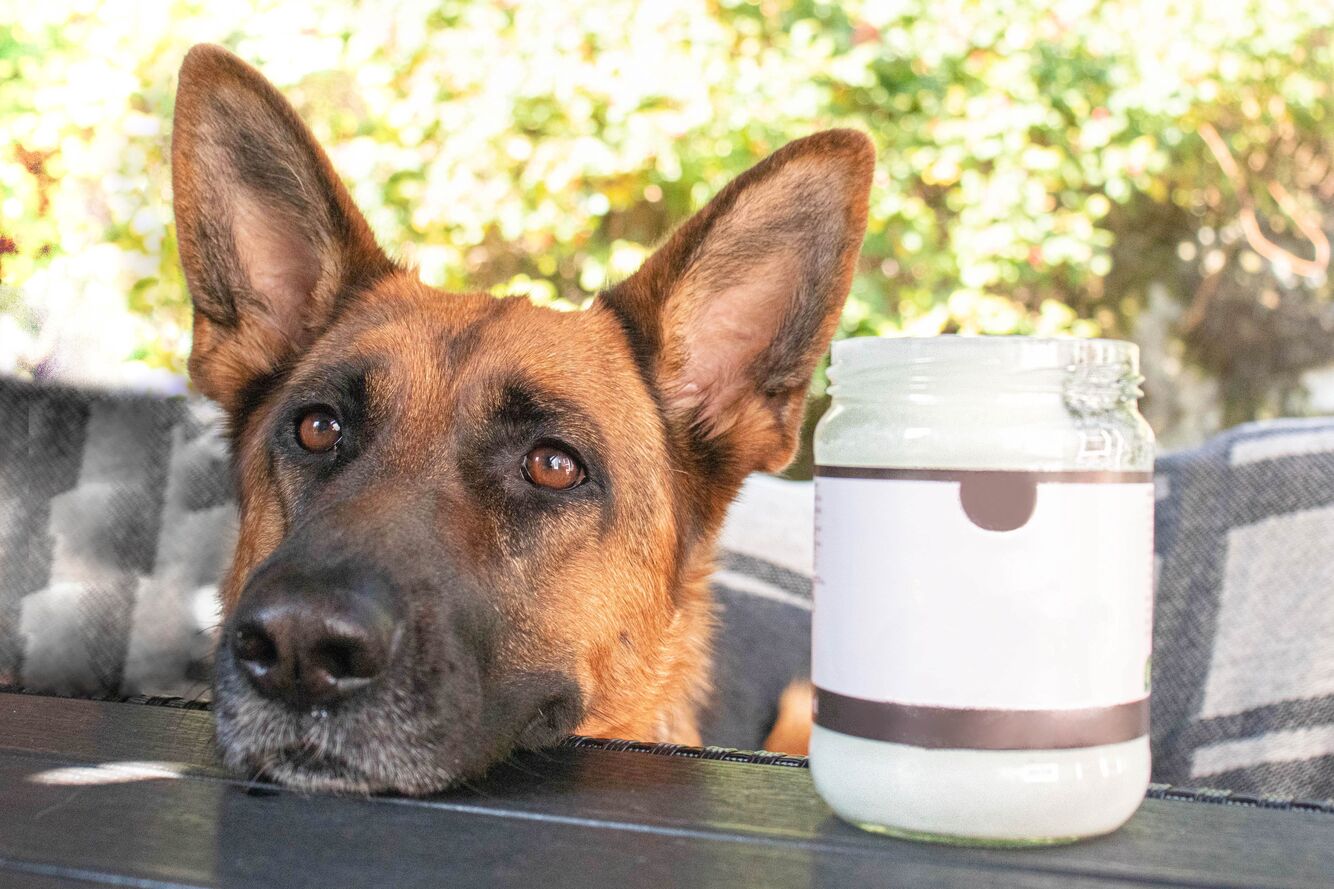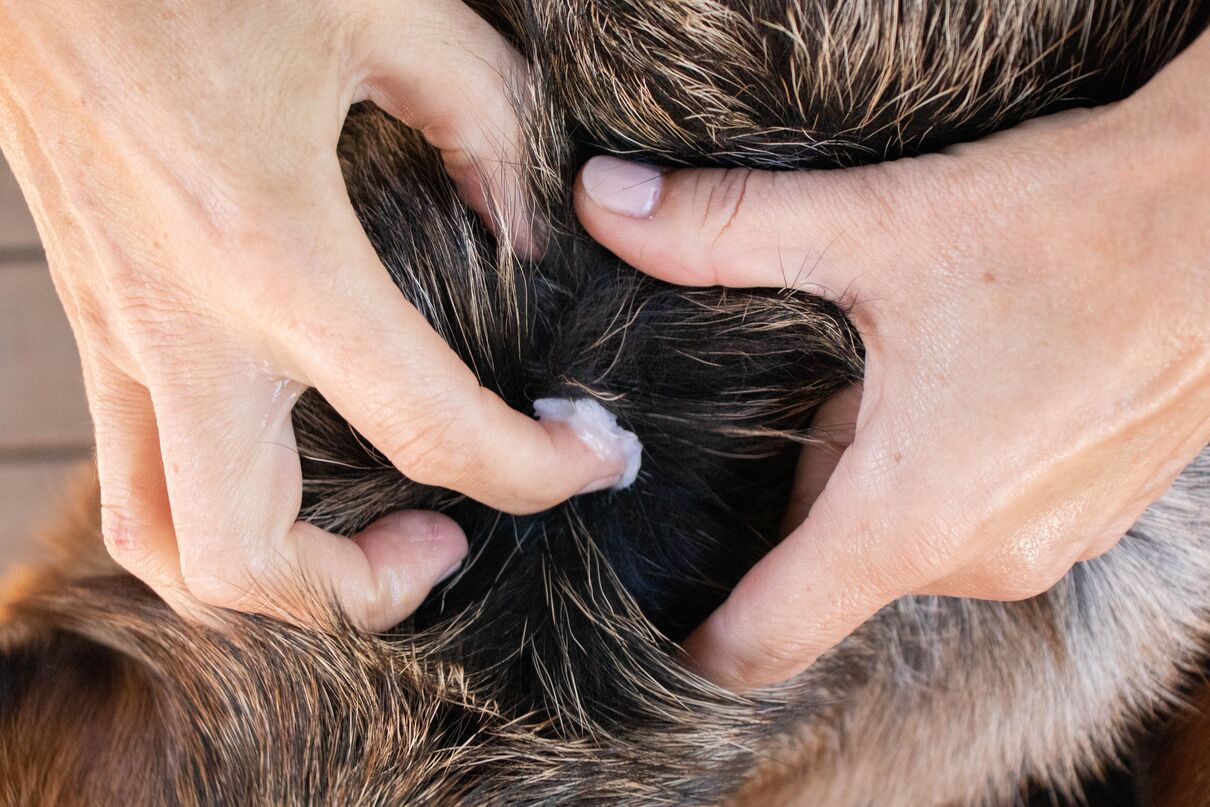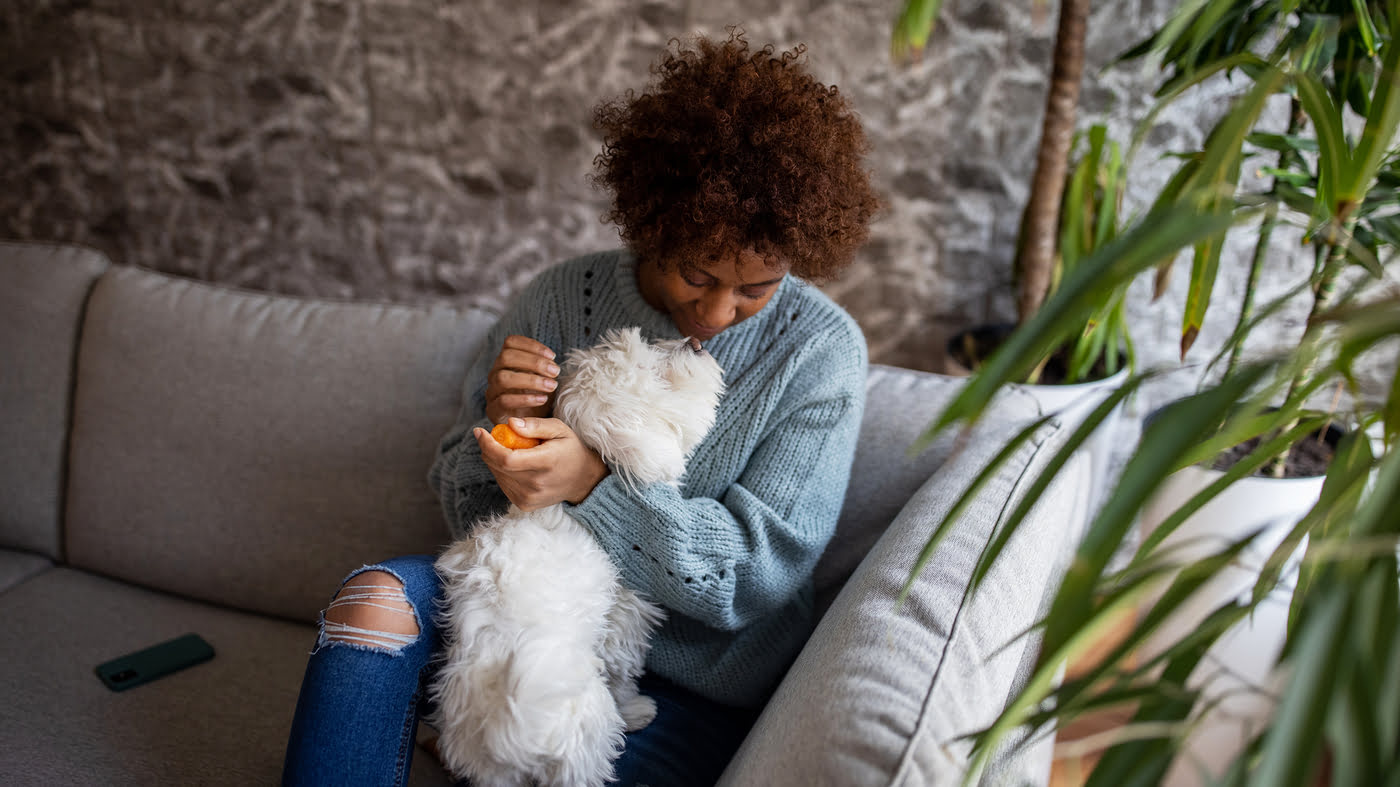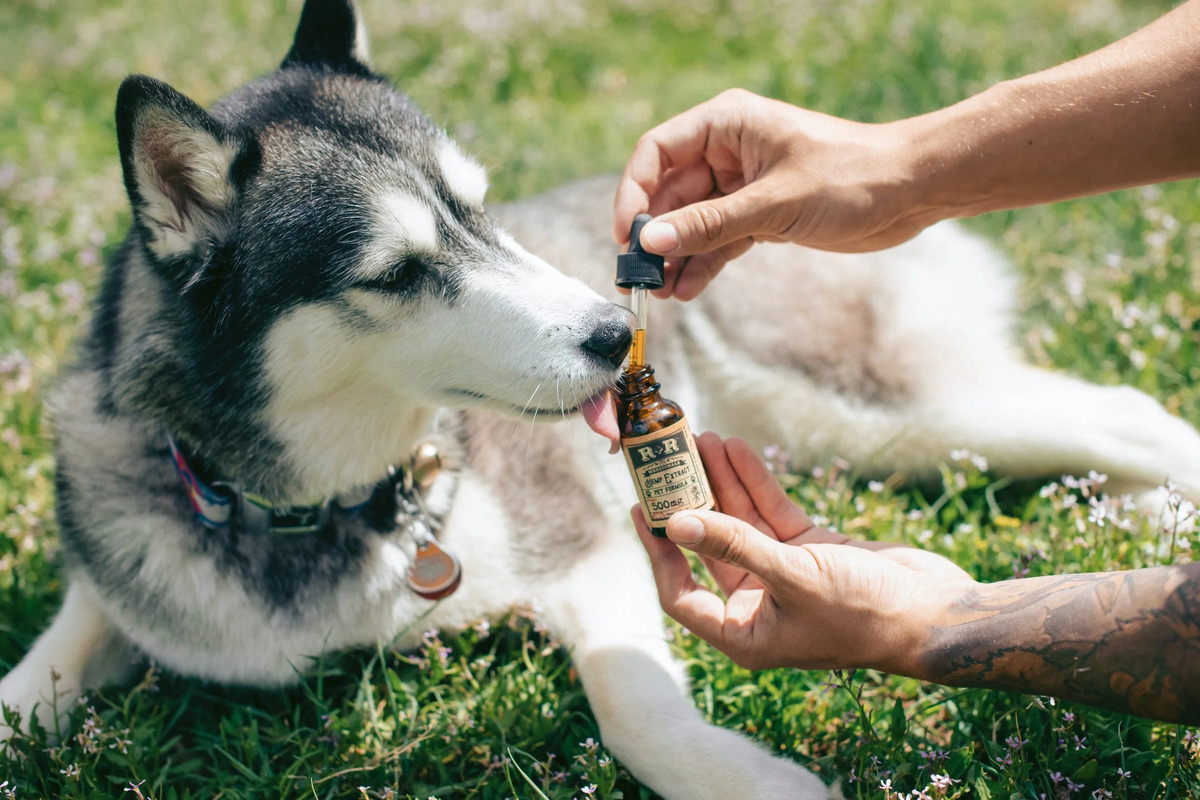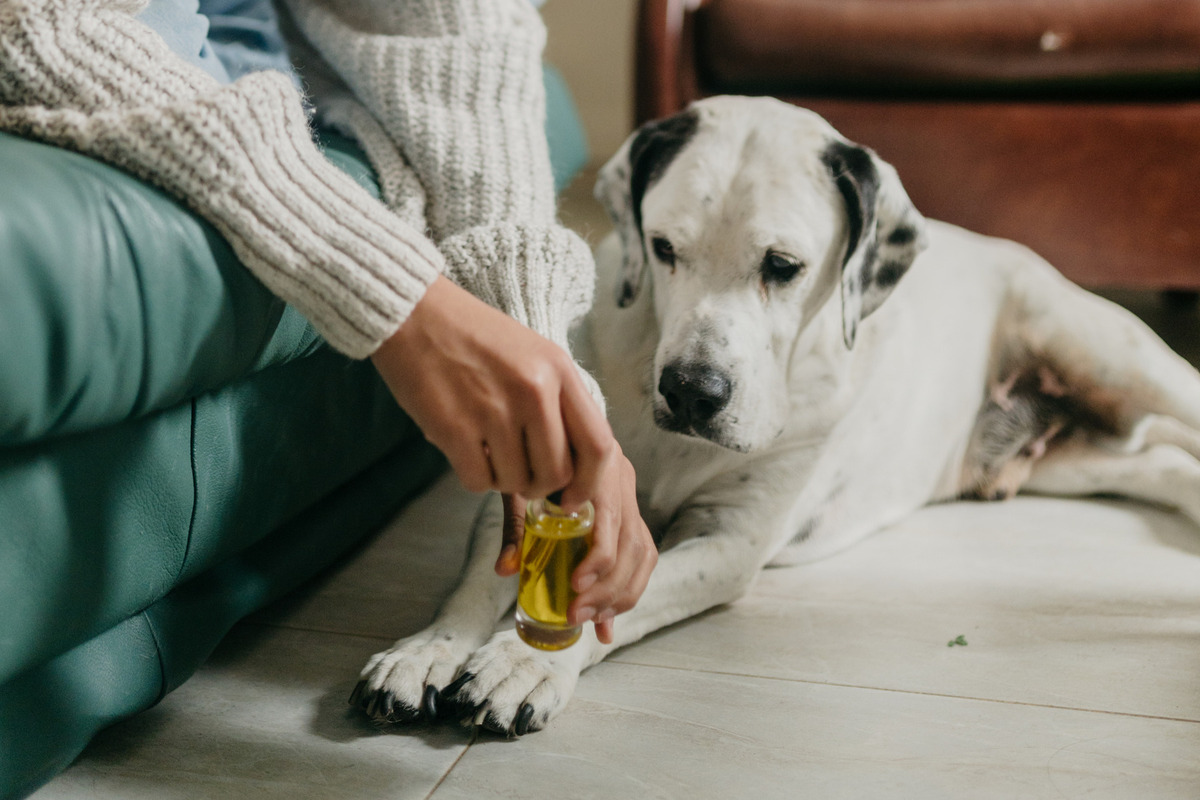Home>Health & Wellness>Common Health Issues>How Do I Use Coconut Oil To Treat My Dog For Fleas


Common Health Issues
How Do I Use Coconut Oil To Treat My Dog For Fleas
Published: February 15, 2024
Learn how to use coconut oil to naturally treat your dog for fleas and other common health issues. Discover the benefits of coconut oil for your pet's well-being.
(Many of the links in this article redirect to a specific reviewed product. Your purchase of these products through affiliate links helps to generate commission for Pawsomeoldies.com, at no extra cost. Learn more)
Table of Contents
Introduction
Coconut oil has gained popularity as a natural remedy for various health issues in both humans and pets. When it comes to treating dogs for fleas, coconut oil is often considered a safe and effective alternative to chemical-based products. Fleas can cause discomfort and health problems for dogs, and many pet owners are seeking natural solutions to address this issue. In this article, we will explore the benefits of using coconut oil for flea treatment, how to apply it to your dog's fur, and its effectiveness as a natural flea repellent. Additionally, we will discuss important precautions and considerations to keep in mind when using coconut oil for flea treatment. By the end of this article, you will have a comprehensive understanding of how coconut oil can be utilized to help alleviate flea infestations in dogs, providing a natural and gentle approach to pet care.
Understanding the benefits of using coconut oil for flea treatment
Coconut oil is renowned for its versatile uses in promoting health and well-being, and its efficacy in addressing flea infestations in dogs is no exception. This natural remedy offers a multitude of benefits when used for flea treatment, making it an appealing choice for pet owners seeking gentle yet effective solutions.
-
Natural Flea-Killing Properties: Coconut oil contains lauric acid, a medium-chain fatty acid with potent antibacterial, antiviral, and antifungal properties. When applied to a dog's fur, the lauric acid in coconut oil can suffocate and kill fleas, disrupting their life cycle and preventing further infestation.
-
Skin and Coat Nourishment: Beyond its flea-fighting abilities, coconut oil serves as an excellent moisturizer for a dog's skin and coat. Flea infestations often lead to skin irritation and dryness, and coconut oil can help alleviate these issues, promoting overall skin health and a lustrous coat.
-
Gentle and Safe: Unlike many chemical-based flea treatments, coconut oil is gentle on a dog's skin and is less likely to cause adverse reactions or sensitivities. This makes it a favorable option for pet owners who prioritize natural and non-toxic remedies for their furry companions.
-
Reduced Risk of Toxicity: Traditional flea control products may contain harsh chemicals that pose a risk of toxicity if ingested or absorbed through the skin. Coconut oil, on the other hand, is safe for dogs even if they lick it off their fur, providing peace of mind for pet owners concerned about potential exposure to harmful substances.
-
Supports Healing of Irritated Skin: Flea bites can cause itching, redness, and inflammation on a dog's skin. Coconut oil's soothing properties can help alleviate these symptoms, promoting the healing of irritated skin and providing relief for the affected pet.
-
Cost-Effective and Readily Available: Coconut oil is often readily available in households and is a cost-effective alternative to commercial flea treatments. Its versatility allows for multiple applications beyond flea treatment, adding value to pet owners seeking a multi-purpose solution.
Understanding these benefits underscores the appeal of using coconut oil for flea treatment in dogs. Its natural properties, coupled with its ability to nourish the skin and coat, make it a compelling choice for pet owners looking to address flea infestations while prioritizing the well-being of their canine companions.
How to apply coconut oil to your dog's fur
Applying coconut oil to your dog's fur requires a systematic approach to ensure thorough coverage and maximum effectiveness in combating fleas. Here's a step-by-step guide to properly applying coconut oil for flea treatment:
-
Prepare the Coconut Oil: Begin by selecting high-quality, unrefined coconut oil, as it retains its natural properties and is free from additives. If the coconut oil is solid at room temperature, gently warm it to liquefy before application. This can be achieved by placing the coconut oil container in a bowl of warm water or using your hands to melt a small amount.
-
Brush Your Dog's Fur: Before applying the coconut oil, brush your dog's fur to remove any tangles, mats, or debris. This step ensures that the coconut oil can be evenly distributed and reaches the skin, where fleas often reside.
-
Apply the Coconut Oil: Using your hands or a soft cloth, gently massage the liquefied coconut oil into your dog's fur, starting from the neck and working your way down to the tail. Pay special attention to areas where fleas are commonly found, such as behind the ears, along the back, and around the base of the tail. Ensure that the coconut oil reaches the skin, as this is where fleas lay their eggs and larvae.
-
Focus on Problem Areas: If your dog has specific areas of irritation or flea bites, apply a slightly thicker layer of coconut oil to these areas to provide soothing relief and support healing.
-
Monitor Your Dog: After applying the coconut oil, monitor your dog to prevent excessive licking or shaking, which can result in the oil being dispersed unevenly or removed prematurely. Consider distracting your dog with a favorite toy or engaging in a calming activity to allow the coconut oil to penetrate the fur and skin.
-
Repeat as Needed: Depending on the severity of the flea infestation and your dog's individual response, you may need to repeat the coconut oil application every few days to maintain its efficacy. Regular application can help break the flea life cycle and promote a flea-free environment for your dog.
By following these steps, you can effectively apply coconut oil to your dog's fur for flea treatment, harnessing its natural properties to combat fleas while nourishing your dog's skin and coat. This gentle and holistic approach offers a safe and soothing alternative to chemical-based flea treatments, aligning with the preferences of pet owners seeking natural solutions for their beloved canine companions.
Using coconut oil as a natural flea repellent
In addition to its efficacy in directly combating existing flea infestations, coconut oil can also serve as a natural flea repellent, helping to deter these pesky parasites from latching onto your dog in the first place. By harnessing the inherent properties of coconut oil, pet owners can create an environment that is less hospitable to fleas, reducing the likelihood of infestations and promoting a healthier, more comfortable living space for their canine companions.
The medium-chain fatty acids present in coconut oil, particularly lauric acid, play a key role in repelling fleas. When applied to a dog's fur, coconut oil forms a protective barrier that can make it difficult for fleas to cling to the hair and skin. This barrier effect not only deters fleas from making contact with the dog but also interferes with their ability to move freely and establish a foothold on the host.
To use coconut oil as a natural flea repellent, pet owners can apply a thin layer of coconut oil to their dog's fur, paying attention to areas where fleas are commonly found, such as the neck, back, and tail. By ensuring that the coconut oil reaches the skin, where fleas often take up residence, pet owners can create an inhospitable environment for these pests, discouraging infestations and reducing the risk of discomfort and health issues for their dogs.
Furthermore, the pleasant aroma of coconut oil can act as a natural deterrent for fleas. The tropical scent of coconut oil is appealing to humans but can be off-putting to fleas, potentially discouraging them from approaching and infesting the dog. This dual-action approach, combining the barrier effect and aromatic properties of coconut oil, makes it a compelling choice for pet owners seeking a natural and holistic method of flea prevention.
By incorporating coconut oil into their dog's grooming routine, pet owners can proactively repel fleas while simultaneously nourishing their dog's skin and coat. This natural approach aligns with the preferences of those who prioritize gentle and non-toxic solutions for their pets, offering a comprehensive way to address flea infestations and promote the well-being of their beloved canine companions.
In summary, utilizing coconut oil as a natural flea repellent presents a proactive and holistic approach to flea prevention, leveraging the protective properties and aromatic qualities of coconut oil to create an environment that is less conducive to flea infestations. This natural method complements the direct flea-fighting capabilities of coconut oil, providing pet owners with a versatile and effective tool in their efforts to maintain a flea-free and comfortable living environment for their dogs.
Precautions and considerations when using coconut oil for flea treatment
While coconut oil is generally safe and beneficial for dogs when used appropriately, there are important precautions and considerations to keep in mind when utilizing it for flea treatment. By understanding these factors, pet owners can ensure the safe and effective application of coconut oil while promoting the well-being of their canine companions.
Allergic Reactions and Sensitivities
Before applying coconut oil to your dog's fur, it's crucial to conduct a patch test to check for any potential allergic reactions or sensitivities. Apply a small amount of coconut oil to a localized area on your dog's skin and monitor for any adverse reactions, such as redness, itching, or inflammation. If any signs of sensitivity occur, discontinue use immediately and consult a veterinarian for guidance.
Quantity and Frequency of Application
While coconut oil is safe for dogs, excessive or frequent application can lead to greasy fur and may attract dirt and debris, potentially exacerbating skin issues. It's important to use coconut oil in moderation and adjust the frequency of application based on your dog's individual needs and response. Additionally, dogs with oily skin or certain coat types may require less frequent application to maintain a healthy balance.
Ingestion and Licking Behavior
Dogs are known to groom themselves by licking their fur, and coconut oil applied to the skin may be inadvertently ingested. While coconut oil is generally safe for dogs to consume in small amounts, excessive ingestion can lead to digestive issues such as diarrhea or an upset stomach. Pet owners should monitor their dog's licking behavior after applying coconut oil and take measures to prevent excessive ingestion, such as distracting the dog with activities or using a protective collar.
Environmental Considerations
When applying coconut oil to your dog's fur, consider the potential impact on the immediate environment, such as furniture, bedding, and flooring. Coconut oil may transfer onto surfaces and fabrics, leading to greasy residues and requiring additional cleaning. Taking proactive measures, such as using a designated area for application and providing a comfortable resting space for your dog, can help minimize environmental impacts.
Read more: How To Use Tea Tree Oil For Dog Fleas
Consultation with a Veterinarian
Before initiating any new flea treatment or grooming regimen, it's advisable to consult with a veterinarian, especially if your dog has pre-existing skin conditions, allergies, or medical concerns. A veterinarian can provide personalized recommendations and guidance tailored to your dog's specific needs, ensuring that the use of coconut oil aligns with their overall health and well-being.
By considering these precautions and factors, pet owners can harness the benefits of coconut oil for flea treatment while mitigating potential risks and promoting a positive experience for their dogs. This mindful approach underscores the importance of responsible and informed pet care, allowing for the safe and effective utilization of coconut oil as a natural and gentle solution for flea infestations in dogs.
Conclusion
In conclusion, the utilization of coconut oil for flea treatment in dogs offers a multifaceted approach to addressing flea infestations while prioritizing the well-being of canine companions. By understanding the natural flea-killing properties, skin and coat nourishment, gentle and safe application, reduced risk of toxicity, and the soothing effects of coconut oil, pet owners can confidently embrace this natural remedy as a holistic solution for flea control.
The step-by-step guide for applying coconut oil to a dog's fur provides a practical framework for pet owners to effectively administer this natural treatment, ensuring thorough coverage and maximum efficacy in combating fleas. Additionally, the dual role of coconut oil as a natural flea repellent further enhances its appeal, allowing pet owners to proactively deter fleas while promoting a healthier living environment for their dogs.
However, it is essential for pet owners to approach the use of coconut oil for flea treatment with mindfulness and consideration. Precautions such as conducting patch tests for allergic reactions, moderating the quantity and frequency of application, monitoring ingestion and licking behavior, and consulting with a veterinarian underscore the importance of responsible and informed pet care.
By integrating coconut oil into their dog's grooming routine, pet owners can not only address existing flea infestations but also take proactive measures to prevent future occurrences. This natural and gentle approach aligns with the preferences of pet owners seeking non-toxic and holistic solutions for their beloved canine companions, fostering a harmonious balance between effective flea control and overall well-being.
In essence, the use of coconut oil for flea treatment in dogs represents a harmonious convergence of natural efficacy, skin and coat nourishment, and proactive prevention, offering a comprehensive and gentle approach to addressing flea infestations. By embracing the benefits of coconut oil while being mindful of precautions and considerations, pet owners can provide their dogs with a natural and soothing alternative to chemical-based flea treatments, fostering a comfortable and flea-free environment that supports the health and happiness of their cherished pets.

